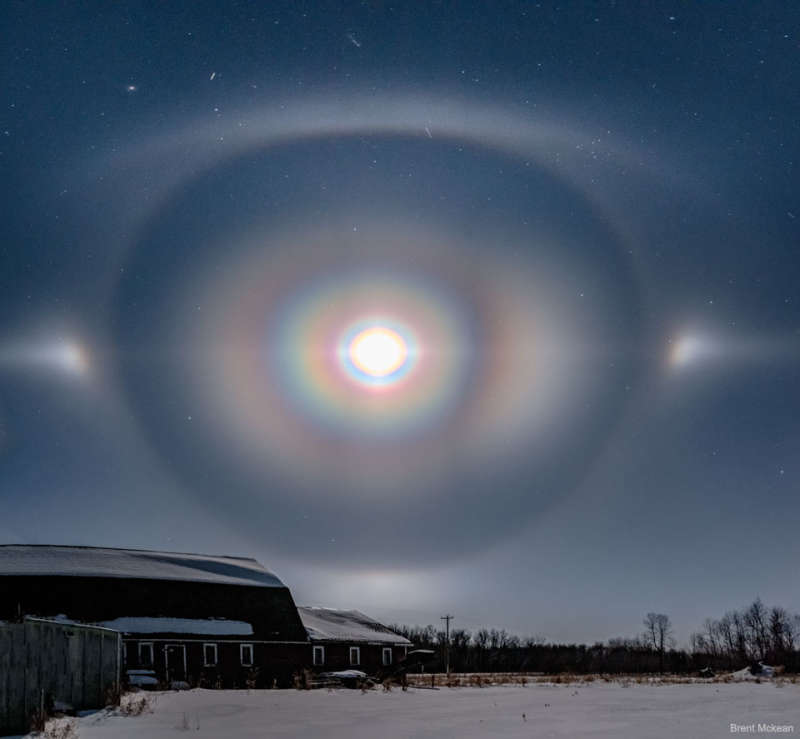Credit & Copyright: Brent Mckean
Explanation:
Yes, but could you get to work on time if the Moon looked like this?
As the photographer was preparing to drive to work,
refraction,
reflection, and even
diffraction of moonlight
from millions of falling ice crystals turned the
familiar icon of our Moon into a
menagerie of other-worldly halos and arcs.
The featured scene was captured with
three combined exposures two weeks ago on a cold winter morning in
Manitoba,
Canada.
The colorful rings
are a corona caused by
quantum diffraction
by small drops of water or ice near the direction of the
Moon.
Outside of that, a
22-degree halo
was created by moonlight refracting through six-sided cylindrical
ice crystals.
To the sides are
moon dogs, caused by light refracting
through thin, flat,
six-sided ice platelets
as they flittered toward the ground.
Visible at the top and bottom of the
22-degree halo are upper and lower
tangent arcs,
created by moonlight refracting through nearly horizontal
hexagonal ice cylinders.
A few minutes later, from a field just off the road to work,
the halo and arcs had disappeared, the sky had returned to normal --
with the exception of a
single faint moon dog.
1999 2000 2001 2002 2003 2004 2005 2006 2007 2008 2009 2010 2011 2012 2013 2014 2015 2016 2017 2018 2019 2020 2021 2022 2023 2024 2025 |
Январь Февраль Март Апрель Май Июнь Июль Август Сентябрь Октябрь Ноябрь Декабрь |
NASA Web Site Statements, Warnings, and Disclaimers
NASA Official: Jay Norris. Specific rights apply.
A service of: LHEA at NASA / GSFC
& Michigan Tech. U.
|
Публикации с ключевыми словами:
Moon - Луна - атмосферные явления
Публикации со словами: Moon - Луна - атмосферные явления | |
См. также:
Все публикации на ту же тему >> | |
